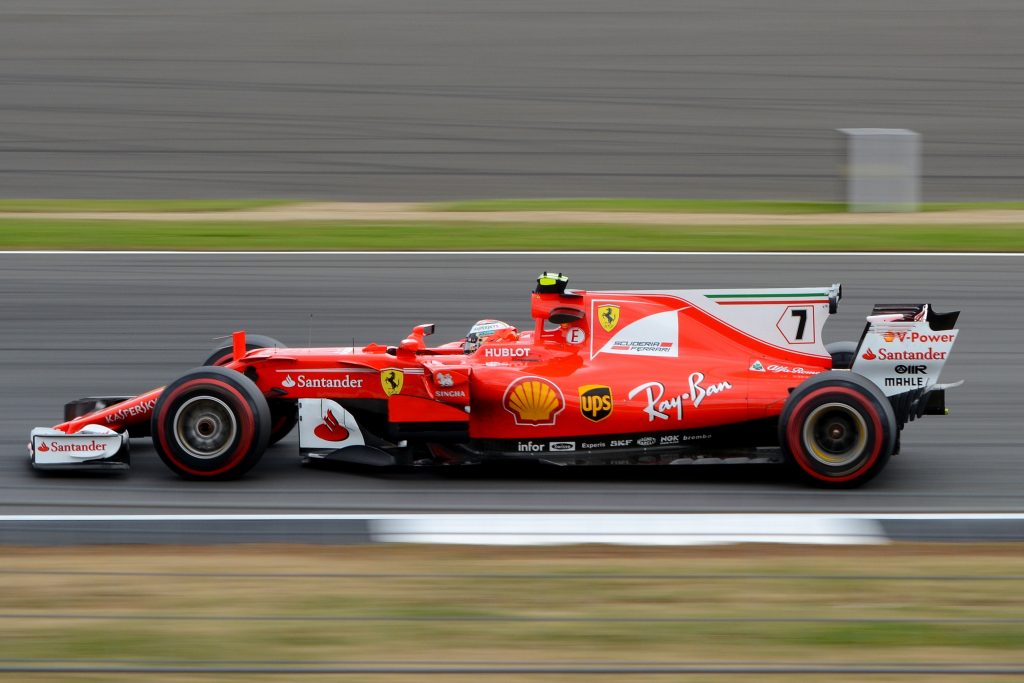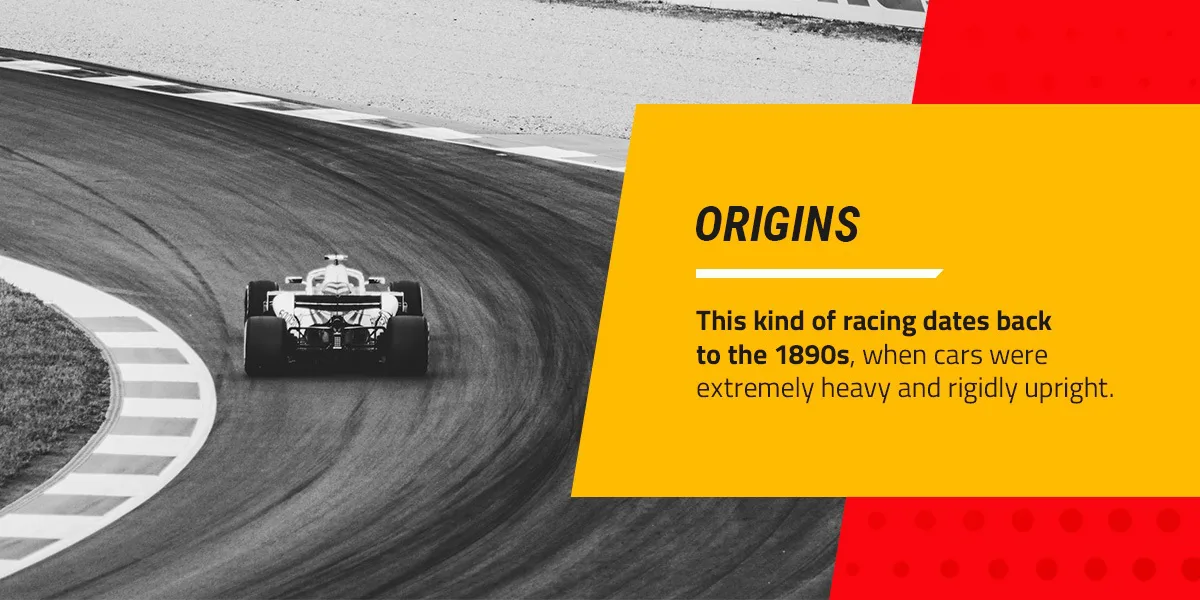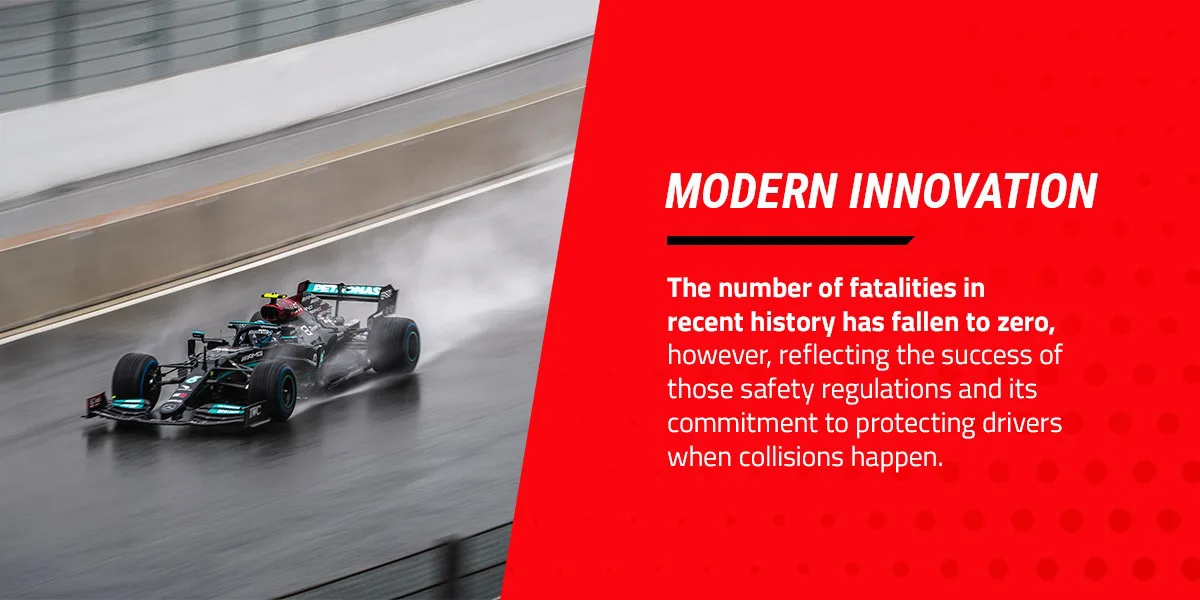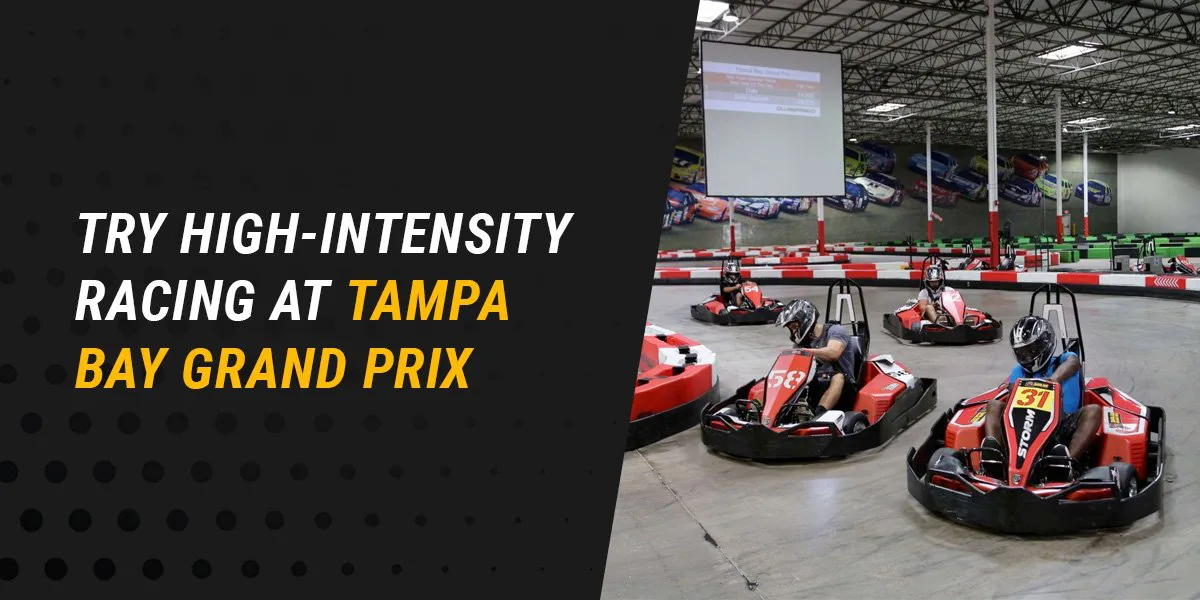The History of Formula 1 and Grand Prix Racing

As long as humans have had the capability to travel at fast speeds, races have existed — from humble motor races in the late 1890s to the rich history of Grand Prix racing throughout the 1900s and 2000s. There are many types of racing, and one of the most popular is Formula 1.
Here’s a brief history of Formula 1 racing and how it evolved into an international sport.
What Is F1 Racing?
The “formula” in Formula 1 racing refers to the set of rules and procedures that drivers and cars must abide by. It is a sporting event where specialized cars participate in qualifying and championship races to name the fastest driver. Formula 1 features some of the fastest vehicles and most skilled drivers. There are 10 teams in each race with two drivers each, making a total of 20 cars.
The races occur over three days in what’s called a Grand Prix. There are 22 Grand Prix in total held at various locations around the world. Drivers race around a track in a single seated, open cockpit car that is specific to F1 racing.
Today, F1 has two championships going on at the same time — the Driver’s Championship and the Constructors Championship. The Constructors Championship is a testament to how much work goes into the car and the maintenance during the race.
Early Days of Formula 1
In the beginning, racing was a very different sport than it is today — vehicles were much slower, tracks were in poorer shape and performance wasn’t even close to the standards showed off on tracks today. It’d take a long time before those simple contraptions with wheels would evolve into the aerodynamic powerhouses we see flying across Grand Prix tracks today.
Still, it’s interesting to look back at the origins of racing to see how it’s evolved throughout the years and became the successful F1 sport it is today.
Origins
Though Formula 1 is its own unique sport, its roots lie in the origins of motor racing. This kind of racing dates back to the 1890s, when cars were extremely heavy and rigidly upright. The races were almost incomparable to today’s — tracks were made with tarred sand or wood and races sometimes took over two days to complete.
A motor race in 1895, for example, was 745 miles long, stretching from Paris, France, to Bordeaux, France. Fernand Charron, who won the same race in 1899, did so at an average speed of 29.9 miles per hour.
All great sports have their humble beginnings. That flashy speed of 29.9 miles per hour seems impossibly slow by today’s standards, but back then, they were still dealing with clunky vehicles and ineffective technology that would see vast changes throughout the years.
The First Grand Prix Race
Grand Prix racing started by putting some parameters around those long motor races.
In 1901, the first race bearing the name “Grand Prix” was introduced — the French Grand Prix Le Mans. Ferenc Szisz won it in a Renault, covering 700 miles at an average speed of 63 miles per hour. At this point, Grand Prix racing started to evolve for efficiency.
In 1908, “pits” were introduced in the Targa Florio in Sicily. These pits were shallow embankments carved into the sides of the tracks where mechanics could replace vehicles’ rims. Before the innovation of pits, vehicles would travel with permanent rims for the entirety of the race.
War Years
Formula 1 dates back to the World Wars in Europe.
The entrance into World War I in 1914 would start a long period of struggles for racing in general. Before then, racing had grown immensely and was beginning to capture the attention of audiences worldwide. Once the war started, much of the focus was taken off leisurely activities — especially racing — to concentrate on military endeavors.
Once World War I ended, racing fans planned to host a championship for the F1 drivers. The start of World War II interrupted this and put the plans on hold. In those tumultuous years, however, a new form of racing would be born and change racing forever.
Once the wars ended, motor racing needed a complete reboot. The hunger was back for racing and teams, drivers and fans alike were ready to get back into the exciting sport. But racing needed a launching pad to return to its place in the world, including a revamping of its rules and an organized body to set teams on an even footing.
The Commission Sportive Internationale stepped in in 1946 to reconstruct racing, replacing the president with Augustin Perouse. Perouse began collaborating with others on a new Grand Prix Formula that would work for all racers in the new era.
The original rules catered to vehicles with 4.5-liter normally-aspirated engines or 1.5-liter supercharged engines. The term “formula” simply refers to the unique set of rules and regulations governing the race. In the beginning, some knew it as Formula A and Formula Internationale. Eventually, the name Formula 1 stuck, symbolizing the best and only formula for racers everywhere.
The World Championship
In May 1950, the first Formula 1 world championship league finally began in Silverstone, England. Seven qualifying races counted for points toward the championship, and other side races popped up across the continent for extra competition.
The seven rounds would take place in several locations, including Britain, Monaco, America, Switzerland, Belgium, France and Italy — all European events except for the United States Grand Prix, which would be the Indianapolis 500. Scoring was based on placement and lap times — eight points for first, six points for second, four for third and two for fifth. Those with the fastest lap were awarded an extra point.
Although this was an exciting start to Formula 1 and the reboot of racing, it didn’t garner a huge amount of enthusiasm. Many of the racers didn’t care for the worldwide spectacle — they’d been racing for years without recognition and were mostly focused on the competition. The prize money was also relatively small, with the overall prize fund equating to only about $1,300.
Still, there was a lot of agreement that this new set of organized standards would be beneficial for the sport and keep everyone on an even footing. That first World Championship would be a testament to Formula 1’s bright future. A crowd of 100,000 came out to watch the first running at Silverstone in 1949.
In 1950, King George VI and Queen Elizabeth and their royal entourage attended the staging of the first World Championship Grand Prix. From then on, the event was known as “Royal Silverstone.”
From that famous start to the World Championship, F1 would go on to see massive success, jumpstarting an exciting sport that continues to this day.
Cars and Drivers
One of the more intriguing parts of Formula 1 is the relationship between cars and drivers. At the beginning of Formula 1, some car manufacturers already had well-known drivers they could rely on to showcase their vehicles. Other newer companies, like Mercedes, went out to find new up-and-comers.
This brought amazing drivers into the spotlight and created the opportunity for competitions between great talents. Often, these drivers would face off in heated rivalries that extended over various races. The famous competitions between Niki Lauda and James Hunt, known for their wildly different personalities and styles, became storied — even becoming the subject of a Hollywood film.
Many brands and drivers dominated for long periods of time, such as Alfa Romeo, Ferarri and Maserati. In the late 1990s, Michael Schumacher became one of the most dominant drivers in Formula 1’s history, winning seven world championships.
Obstacles to Success
After Formula 1 arrived out of the bleak years of wars, it became hugely popular and successful, though not without flaws. One of the biggest obstacles Formula 1 faced as time went on was safety — both for drivers and vehicles.
Over time, few cars could handle the wear and tear while meeting the required regulations of Formula 1 racing. As fewer people entered races, organizers had to allow Formula 2 cars to participate. In addition, Formula 1 racing caused 13 deaths in its first 10 years.
Casualties like these were common in the beginning years of Formula 1. It wasn’t long before Formula 1 officials realized there needed to be a bigger focus on innovating vehicles for better safety.
Introducing Safety
Formula 1 safety measures began to take form in the 1960s. Interestingly, many safety regulations weren’t about avoiding crashes and accidents — it was about protecting drivers when those crashes happened. After all, accidents are inevitable when multiple cars are racing around a track at high speeds.
Designers started adjusting cockpits so that drivers could easily escape after a collision. Shatterproof helmets also helped protect drivers. One of the main problems with crashes was the threat of fires. In the 1960s, cars were required to be fitted with fire protection and safer fuel tanks. All drivers now had to wear fireproof suits.
In the 1970s, Formula 1 sought to improve the safety of spectators. Fencing became regulated and “catch fences” became the new standard. Previously, hay bales had been used to separate spectators from the track. Different-colored flags were also introduced to communicate with the drivers about incidents on the track or if the race had been stopped for any reason.
Modern Innovation
Though there are still chances for casualties in Formula 1 racing, modern safety innovations have made driving safer than ever.
In the 1980s, crumple zones and survival cells were added to protect drivers during crashes. Regulations became more precise, dictating small aspects of the vehicle such as the headrest and front overhang length. During the 2000s, safety revolved around minor adjustments to vehicles to help them resist collisions.
Overall, accidents have increased over the years alongside the increase in high speeds. The top speed of Formula 1 vehicles has come a long way from its origins in the 1890s. The number of fatalities in recent history has fallen to zero, however, reflecting the success of those safety standards and its commitment to protecting drivers when collisions happen.
Car Improvements for Speed And Safety
The first step to getting drivers back into racing included improving the cars. Prior to the changes, cars held their engine in the front and tires had narrow treads. Late into the 1950s, Cooper Car Company manufactured a car with an engine that sat behind the driver. Soon all car manufacturers followed the trend. The change of location offered more mechanical grip for the car, ultimately adding to its safety.
Cars continued to evolve as they got faster and more aerodynamic. They rounded corners with ease thanks to their ground-effects that increased grip. Lotus Cars led the way in car technology, inventing many cutting-edge features throughout the decades. After years of changes, cars finally reached safety levels in 1994 that helped prevent casualties. The cars had reduced speeds and modified safety features.
These safety and speed features were integral in making Formula 1 the hugely popular sport it is today. The main obstacle Formula 1 encountered during its early history was overall danger, which caused casualties. With a sharper focus on protecting drivers and fans alike, the sport gained respect and continued to thrive throughout the years.
Formula 1 Today
Today, Formula 1 has over 500 million fans, and 20 drivers from 10 teams battle for the world title each year. The sport is international, with races taking place in 21 destinations, including the location of the first race in Silverstone, England. Formula 1 celebrated its 1,000th race in 2019, and it continues to sponsor races in the 2020s.
Its simple premise — finish first — is made even greater by some of the fastest cars in the world and the best drivers on the planet. Every year, drivers come back to try to prove their worth on legendary tracks across the globe. It’s become one of the most lucrative world sports, with drivers earning millions of dollars just to drive in one race.
Today, there are dozens of well-known F1 drivers, some of whom are recognized as the best racers in F1 history. Lewis Hamilton, Charles Leclerc, Lando Norris and Max Verstappen are just a few drivers that draw dedicated fans to the stands every season. The F1 teams as of 2022 include Ferrari, Red Bull Racing, Mercedes, McLaren and more.
It’s become so popular that go-karting was invented as a way to simulate an F1 race without the high stakes. Many Formula 1 drivers actually start their careers racing go-karts, as it’s one of the best ways to discover and practice competitive racing. Its mix of high speeds and handling makes it a great experience that simulates the real thing.
Try High-Intensity Racing at Tampa Bay Grand Prix
While you may not be training to become an F1 driver, go-karting is still a fun experience that can give you a glimpse into the life of a Formula 1 racer. Want to get in on the racing action yourself? Tampa Bay Grand Prix offers participants the experience of being on an F1 racetrack. Our tracks are similar to the ones that Formula 1 drivers started their careers on.
Try out your first go-kart race on one of the best tracks in Tampa Bay. Our go-karts hit 50 miles per hour, offering the speed and fun that give you the thrill of being in a real Formula 1 race in a safe way. Check out our adult racing experiences for your fix of Formula 1 racing today.




